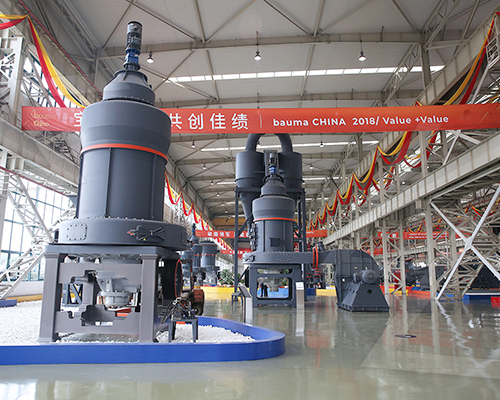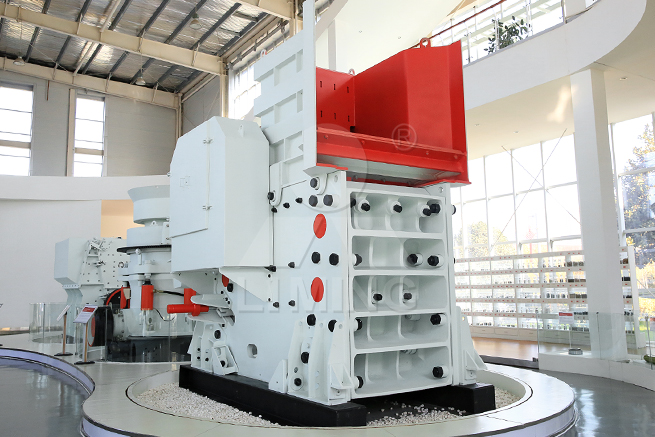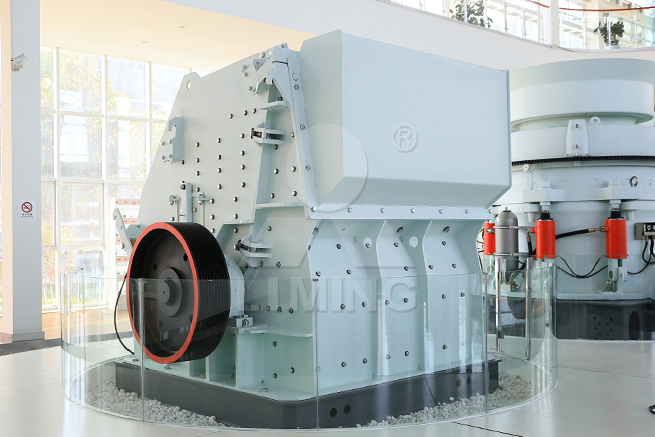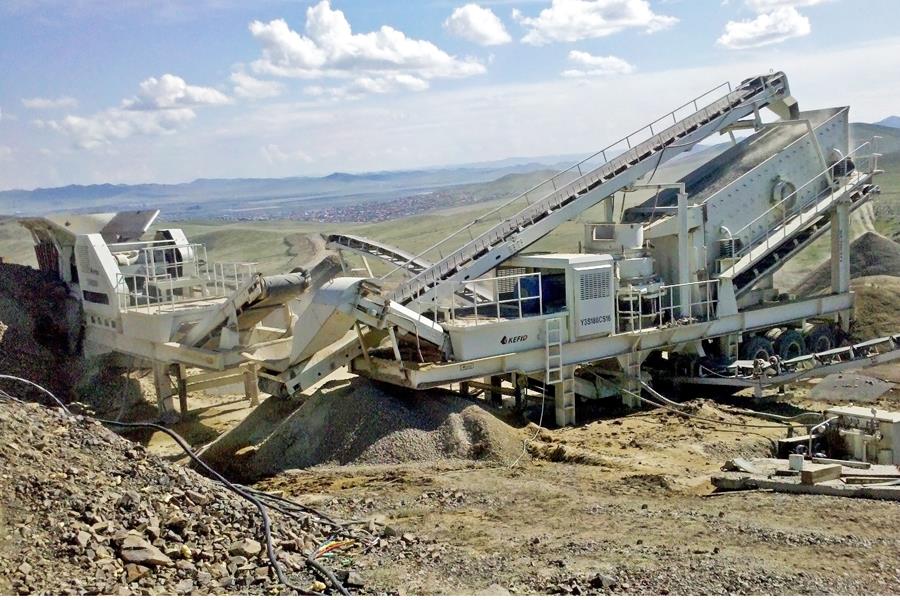

Mechanized sand is processed by crusher and sand making machine, screened and made of rock particles with particle size less than 4.75mm, excluding particles of soft rock and weathered rock. Natural sand is formed by natural weathering of rocks in the
Mechanized sand is processed by crusher and sand making machine, screened and made of rock particles with particle size less than 4.75mm, excluding particles of soft rock and weathered rock. Natural sand is formed by natural weathering of rocks in the atmosphere, water transport and sorting, accumulation and other natural conditions, including river sand, lake sand, mountain sand and desalinated sea sand. The two very different causes of formation determine that the mechanism sand has many differences from river sand.
Mechanized sand is crushed by sand making machine, and the grain shape is mostly triangular and square moment, the surface is rough and sharp, and the grain shape presents a variety of shapes depending on the parent rock and production process. The appearance color of mechanism sand made of limestone is grayish white, granite and sandstone mechanism sand is yellowish black. Mountain sand is similar to mechanism sand, with angularity and rough surface, but it contains more mud and organic impurities, and the bond with cement is poor, so it should be restricted when used; river sand and lake sand are rounded and relatively clean because they have been washed by water and waves for a long time, so they are generally used in engineering; sea sand is rounded and smooth because it has been washed by sea current for a long time, so it is clean and the particle size is generally neat, but it is often mixed with shells and salts and other harmful impurities. The particle shape and surface characteristics of sand affect its bonding with cement and the fluidity of concrete mixes. Therefore, the particle shape and surface characteristics of the mechanism sand are favorable for bonding with cement compared with natural sand, but unfavorable for the concrete's compatibility, especially for the low strength grade of the mechanism sand concrete can cause a larger water secretion rate.

The formation process of river sand determines the fineness modulus and gradation of river sand in different river channels and different locations of the same river channel are often different, which is determined by the natural action. The fineness modulus and gradation of the mechanism sand can be controlled by the adjustment of parameters in the production process, which can be flexibly adjusted and improved. As far as the current investigation of the production and use of mechanism sand is concerned, most of the mechanism sand is medium-coarse sand, and the fineness modulus is generally in the range of 3.0~3.7. From the statistical analysis of particle composition, the mechanism sand is more than 2.36mm and less than 0.15mm particle size, while the middle particles are less (especially 0.3mm ~ 1.18mm ) sometimes a particle size break.

There is a correlation between fineness modulus and gradation of mechanism sand. Under a specific production equipment and process, the fineness modulus of mechanism sand and the sieve allowance of a single sieve are linearly related, which can be determined by test first, and then the sieve allowance of a single sieve can be measured conveniently to calculate the fineness modulus quickly. The fineness modulus of mechanism sand also has a great relationship with the stone powder in the grading of fine grains, generally the fineness modulus of mechanism sand is greatly affected by the stone powder content, high stone powder content fineness modulus is small, stone powder content is low when the fineness modulus is large.

Stone dust in the mechanism sand is produced in the production process of the mechanism sand, and the parent rock mineral composition is the same, the particle size is less than 0.075mm rock particles. Although the particle size of stone dust is defined the same as that of mud dust in natural sand, it is not different from mud dust. The composition of mud powder and stone powder is different, the particle size distribution is different, and the role played in the concrete is more different. Mud powder often has organic matter, mica, light substances and other harmful impurities, these impurities will weaken the bond between the slurry and aggregate interface, increase the water consumption of concrete, the introduction of cavities and defects in the cement stone matrix, to a large extent affect the strength of concrete. In contrast, clean stone powder (exactly the same mineral composition as the parent rock) constitutes the microfine gradation of the mechanism sand, which acts as a filler in the concrete and even promotes hydration and participates in hydration, which plays an improving role in a series of properties of the mechanism sand concrete.
It was found that 70% of the particle size distribution of stone powder in limestone sand is concentrated above 16 μm, with an average particle size of 36.9 μm, while 70% of the particle size distribution of mud powder in natural sand is concentrated below 16 μm, with an average particle size of 8.4 μm. The particle size distribution of stone powder not only fills the voids between concrete aggregates, but also improves the water retention and burdening of concrete to a certain extent, improving the Concrete workability. Cai Jiwei measured the specific surface area of different limestone quality stone powder after 75μm sieve, where the specific surface area of high open stone powder is 204m2/kg, and the specific surface area of various air-selected stone powder is 310-360m2/kg, which is close to that of cement and much smaller than that of clay.

The stone powder in the mechanism sand, as the filling part of the aggregate, fills the gaps between the large particles, improves the micro-grading, improves the concrete compactness, and then improves the overall performance of concrete. In addition to the filling role of stone powder, some researchers have studied limestone powder mixed into concrete to enhance the strength of concrete because it is involved in the hydration reaction of concrete.
If you are interested in our products or have questions, welcome to call our telephone +86-19937863975 or click "Business" online consultation, our customer service staff will provide you with detailed answers, thoughtful service, your satisfaction will be our unremitting impetus to move forward, welcome your click consultation.
Previous: SMP Crusher
Next: SMP Crusher

Mechanized sand is processed by crusher and sand making machine, screened and made of rock particles with particle size less than 4.75mm, excluding particles of soft rock and weathered rock. Natural sand is formed by natural weathering of rocks in the
Mechanized sand is processed by crusher and sand making machine, screened and made of rock particles with particle size less than 4.75mm, excluding particles of soft rock and weathered rock. Natural sand is formed by natural weathering of rocks in the atmosphere, water transport and sorting, accumulation and other natural conditions, including river sand, lake sand, mountain sand and desalinated sea sand. The two very different causes of formation determine that the mechanism sand has many differences from river sand.
Mechanized sand is crushed by sand making machine, and the grain shape is mostly triangular and square moment, the surface is rough and sharp, and the grain shape presents a variety of shapes depending on the parent rock and production process. The appearance color of mechanism sand made of limestone is grayish white, granite and sandstone mechanism sand is yellowish black. Mountain sand is similar to mechanism sand, with angularity and rough surface, but it contains more mud and organic impurities, and the bond with cement is poor, so it should be restricted when used; river sand and lake sand are rounded and relatively clean because they have been washed by water and waves for a long time, so they are generally used in engineering; sea sand is rounded and smooth because it has been washed by sea current for a long time, so it is clean and the particle size is generally neat, but it is often mixed with shells and salts and other harmful impurities. The particle shape and surface characteristics of sand affect its bonding with cement and the fluidity of concrete mixes. Therefore, the particle shape and surface characteristics of the mechanism sand are favorable for bonding with cement compared with natural sand, but unfavorable for the concrete's compatibility, especially for the low strength grade of the mechanism sand concrete can cause a larger water secretion rate.

The formation process of river sand determines the fineness modulus and gradation of river sand in different river channels and different locations of the same river channel are often different, which is determined by the natural action. The fineness modulus and gradation of the mechanism sand can be controlled by the adjustment of parameters in the production process, which can be flexibly adjusted and improved. As far as the current investigation of the production and use of mechanism sand is concerned, most of the mechanism sand is medium-coarse sand, and the fineness modulus is generally in the range of 3.0~3.7. From the statistical analysis of particle composition, the mechanism sand is more than 2.36mm and less than 0.15mm particle size, while the middle particles are less (especially 0.3mm ~ 1.18mm ) sometimes a particle size break.

There is a correlation between fineness modulus and gradation of mechanism sand. Under a specific production equipment and process, the fineness modulus of mechanism sand and the sieve allowance of a single sieve are linearly related, which can be determined by test first, and then the sieve allowance of a single sieve can be measured conveniently to calculate the fineness modulus quickly. The fineness modulus of mechanism sand also has a great relationship with the stone powder in the grading of fine grains, generally the fineness modulus of mechanism sand is greatly affected by the stone powder content, high stone powder content fineness modulus is small, stone powder content is low when the fineness modulus is large.

Stone dust in the mechanism sand is produced in the production process of the mechanism sand, and the parent rock mineral composition is the same, the particle size is less than 0.075mm rock particles. Although the particle size of stone dust is defined the same as that of mud dust in natural sand, it is not different from mud dust. The composition of mud powder and stone powder is different, the particle size distribution is different, and the role played in the concrete is more different. Mud powder often has organic matter, mica, light substances and other harmful impurities, these impurities will weaken the bond between the slurry and aggregate interface, increase the water consumption of concrete, the introduction of cavities and defects in the cement stone matrix, to a large extent affect the strength of concrete. In contrast, clean stone powder (exactly the same mineral composition as the parent rock) constitutes the microfine gradation of the mechanism sand, which acts as a filler in the concrete and even promotes hydration and participates in hydration, which plays an improving role in a series of properties of the mechanism sand concrete.
It was found that 70% of the particle size distribution of stone powder in limestone sand is concentrated above 16 μm, with an average particle size of 36.9 μm, while 70% of the particle size distribution of mud powder in natural sand is concentrated below 16 μm, with an average particle size of 8.4 μm. The particle size distribution of stone powder not only fills the voids between concrete aggregates, but also improves the water retention and burdening of concrete to a certain extent, improving the Concrete workability. Cai Jiwei measured the specific surface area of different limestone quality stone powder after 75μm sieve, where the specific surface area of high open stone powder is 204m2/kg, and the specific surface area of various air-selected stone powder is 310-360m2/kg, which is close to that of cement and much smaller than that of clay.

The stone powder in the mechanism sand, as the filling part of the aggregate, fills the gaps between the large particles, improves the micro-grading, improves the concrete compactness, and then improves the overall performance of concrete. In addition to the filling role of stone powder, some researchers have studied limestone powder mixed into concrete to enhance the strength of concrete because it is involved in the hydration reaction of concrete.
If you are interested in our products or have questions, welcome to call our telephone +86-19937863975 or click "Business" online consultation, our customer service staff will provide you with detailed answers, thoughtful service, your satisfaction will be our unremitting impetus to move forward, welcome your click consultation.
Previous: SMP Crusher
Next: SMP Crusher
 What are the characteristics of the mechanism sand made by sand making machine?
What are the characteristics of the mechanism sand made by sand making machine? Detailed explanation of construction waste treatment process
Detailed explanation of construction waste treatment process Large mobile stone crusher offer
Large mobile stone crusher offer Limestone crushing and sand making project configuration and quotation
Limestone crushing and sand making project configuration and quotation Examples of Mechanized Sand Concrete in Large Engineering Projects in China
Examples of Mechanized Sand Concrete in Large Engineering Projects in China What are the characteristics of the mechanism sand made by sand making machine?
What are the characteristics of the mechanism sand made by sand making machine? Detailed explanation of construction waste treatment process
Detailed explanation of construction waste treatment process Large mobile stone crusher offer
Large mobile stone crusher offer Limestone crushing and sand making project configuration and quotation
Limestone crushing and sand making project configuration and quotation Examples of Mechanized Sand Concrete in Large Engineering Projects in China
Examples of Mechanized Sand Concrete in Large Engineering Projects in China